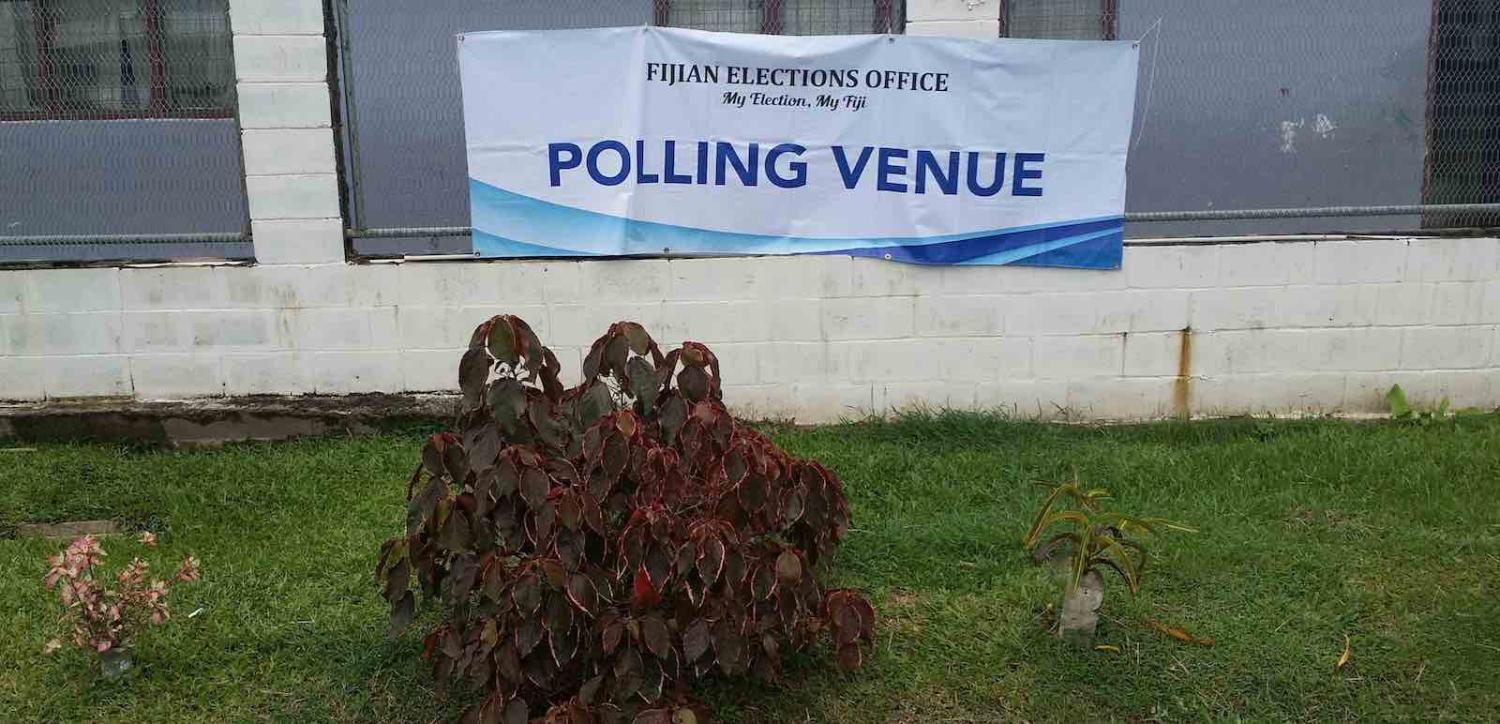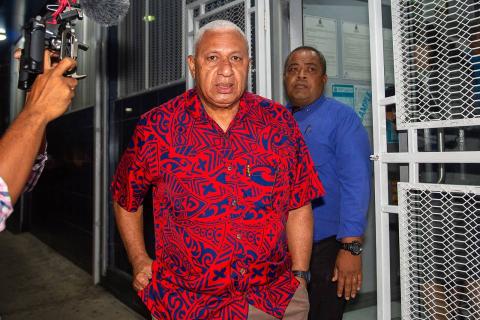I arrived in Suva six days before the 2018 Fijian election, it was apparent that the country was bracing itself for a tight election contest.
In 2014, Frank Bainimarama’s party, Fiji First, won in an electoral landslide. Its main opponent then, the Social Democratic Liberal Party (SODELPA), campaigned on indigenous Fijian interests and sought to revert the reforms Bainimarama implemented during his authoritarian rule between 2006 and 2014. The National Federation Party (NFP) also scored a few seats in 2014 from their campaign to remove the 2013 constitution – which they criticised as undemocratically implemented by Bainimarama.
In 2018, opposition campaign platforms have changed remarkably – broadly attempting to follow in the footsteps of Fiji First’s popular country-wide social welfare, infrastructure, and nation-building programs.
In 2018, opposition campaign platforms have changed remarkably – broadly attempting to follow in the footsteps of Fiji First’s popular country-wide social welfare, infrastructure, and nation-building programs. This meant instead of opting to fight Fiji First on the basis of their rise to power under illegitimate circumstances, opposition parties generally shifted to arguing that they could implement socio-economic reforms more equally, as well as more transparently than Fiji First.
For SODELPA this could have been a necessary change, given its own leader – Sitiveni Rabuka – was responsible for an ethno-nationalist coup in 1987 and implemented a widely condemned constitution in 1990.
Word on the street suggested that the key concerns of voters fell into two camps. The first from doubts surrounding the state of the economy, levels of poverty, or the dictatorial nature of the Fiji First’s governance. While others felt that Fiji First had provided both stability and services not seen in Fiji’s history – such as social welfare, a pension, and education benefits – and should be allowed to further implement the reforms that they started in 2014.
Fake news over social media likewise played a role throughout election campaigning, with leaders forced to respond to some outlandish rumours. This included a claim that Bainimarama was controlled by his Attorney-General – Aiyaz Sayed-Khaiyum – with a ring. Others rumoured that Rabuka had lost his case with Fiji’s Independent Commission Against Corruption (FICAC) over failing to declare his assets, liabilities, and income – making him ineligible to run. Rabuka was cleared two days before the election.
Election day on 14 November was a rainy affair. To encourage voter turnout, the day was made a public holiday, yet the general atmosphere remained subdued.

Travelling between Suva and Sigatoka I visited a total of twelve polling venues.
The first venue at Fiji’s National University (FNU) contained no discernable line. A number of separate polling stations were already set up on arrival and populated with a number of polling officials, along with two police officers. A format that would repeat itself throughout the day.
Before entering voting stations, voters were required to present a voter identification card. This was to ensure they were at their designated polling venues and station – which could be checked by texting the Fijian Elections Office (FEO) number – in order to ease congestion. After being checked, voters emptied their pockets of phones or cameras. I was later told this was to prevent pictures being taken within polling booths and doctored later to make it appear as if corruption was taking place within polling booths.
To cast a valid vote, voters had to choose from a list of non-sequentially ordered numbers on a ballot. Each candidate was previously assigned a corresponding number that appeared on the ballot paper for voters to mark. Because of this, parties tended to advertise their most popular candidate – with other party members elected through the surplus of votes attracted by their main candidate. Upon casting a vote, voters had a finger dipped in indelible ink in order to deter multiple voters.
Throughout the day it became clear that voter turnout would be an issue, either due to the relentless nature of the rain or general voter apathy. This contrasts starkly with 2014, where election lines and queues were criticised as unreasonably long. For 2018, the FEO increased the number of polling stations and staff. However, given the turnout, this was unnecessary. Polling staff generally outnumbered voters at the venues I visited.
Semi-frequent media releases were televised from the Supervisor of Elections (SoE), which increasingly urged the public to vote – signalling that voter turnout would be an issue. To the extent that free bus services were arranged in some parts of the country. Continuous rain also saw 22 polling stations flooded. These stations were deemed inaccessible and were suspended by the SoE – affecting 7,498 registered voters who had to recast their vote on 17 November. Because of this, media blackout laws persisted well into the count.
Only three breaches of the Electoral Act were reported to the FICAC throughout the day. One rumour that was quickly squashed by Police Commissioner Brigadier General Sitiveni Qiliho concerned a night-time restriction of movement. Details of the breaches to the Electoral Act are still unknown.
The provisional count was live streamed by the FEO on Fiji Broadcasting Corporation’s (FBC) Facebook page, as well as regular half-hour updates on FBC’s television station and hourly updates past midnight. A live count was also released on the FEO’s election app.
The Multinational Observer Group (MOG) co-lead by Australia, India, and Indonesia delivered an interim statement on Friday, stating that “the outcome of the 2018 Fijian General Election is on track to reflect the will of Fijian voters and that Fijian voters were able to exercise their right to vote freely”.

